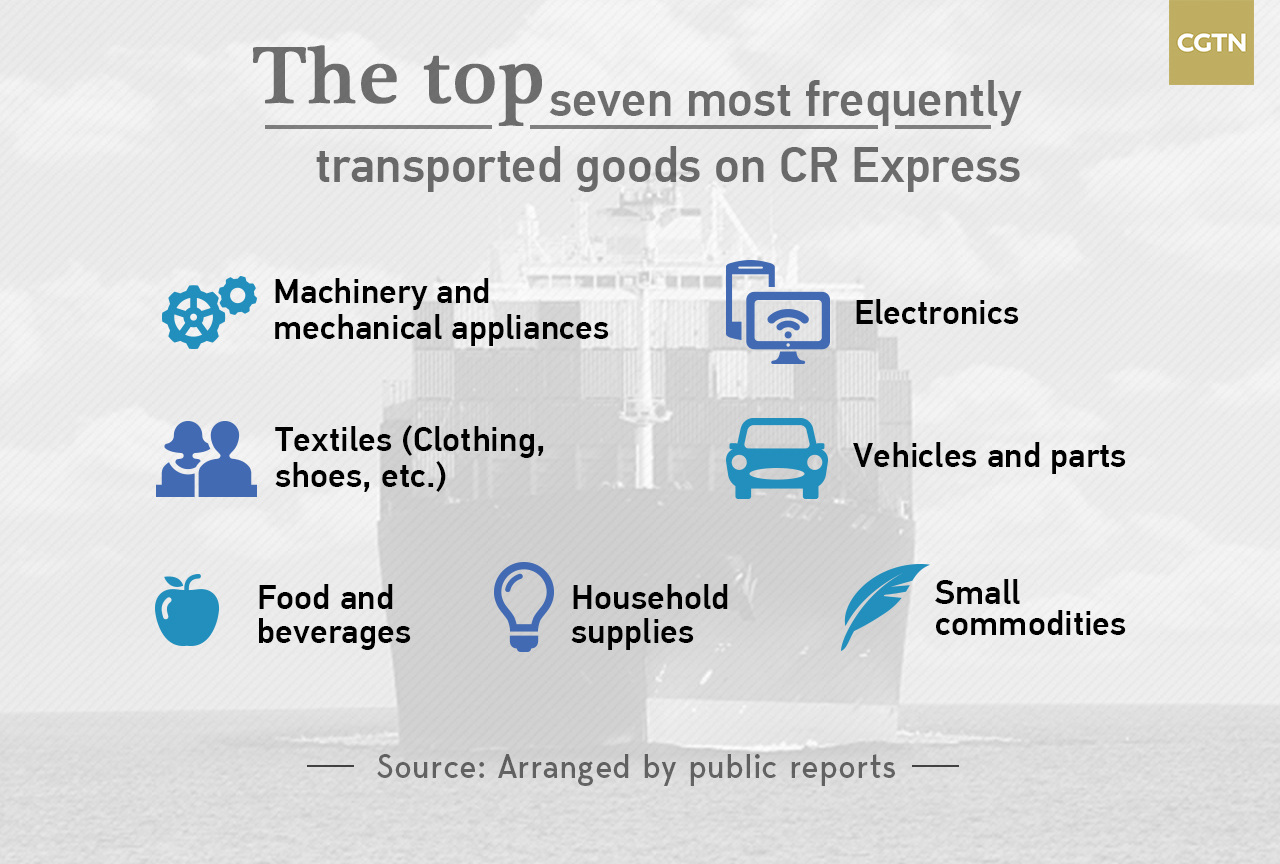
Economy
13:20, 18-Apr-2019
Data Tells: The changing face of trade along the China-Europe rail network
Updated
13:13, 19-Apr-2019
Nick Moore

As freight train X8044 arrived at its terminus in central China last August it quietly hit an impressive landmark, becoming the 10,000th train to make the journey between China and Europe since the launch of the container service in 2011.
Carrying goods all the way from Hamburg in northern Germany, the X8044 service to Wujiashan container terminal in Wuhan, central China's Hubei Province is just one of the many services now linking 48 Chinese cities with 42 European destinations.
A closer look at the number of containers moving an array of goods across continents underlines just how much this rail connection between China and Europe has transformed trade.
Since 2011, the number of containers being transported along the China-Europe freight rail service network has increased dramatically, from 1,404 per year to 214,374 in 2017. Between 2016 and 2017 alone the volume more than doubled during a period that saw major new routes established, such as the link between London and Yiwu, in east China's Zhejiang Province.
The vast majority of container traffic is heading out of China, with 212,000 outbound containers compared with 2,437 inbound. This reflects China's growing goods exports to partners in Western, Central and Eastern Europe.
The rapid uptick in container volume is impressive, but what is being transported? According to official data, among the most frequently transported goods are tobacco and alcohol products, electronics, machinery, cars and car parts and clothing and textiles.

Outbound containers mostly transport electronics, machinery and clothing from China to Europe, while inbound routes are bringing European tobacco and wine products, cars and car parts and construction materials to China.
Most Chinese exports along the China-Europe freight rail network go to Germany, the Netherlands, France, Russia and Spain, and mainly include boilers, machinery and mechanical appliances.
The top countries using the rail link to export goods to China are Germany, Russia, France, Iran and the Netherlands, with major exports including fossil fuels, machinery and aircraft.
The development of the freight rail network has seen several routes customized and tailor-made for specific companies or products. During the 2018 FIFA World Cup in Russia, a train with a load of 100,000 crayfish made its way from Jingzhou in central China's Hubei Province to Moscow, for football fans to enjoy Chinese seafood during their time at the tournament.
In 2017, a refrigerated train capable of adjusting temperature and humidity took a shipment of red wine on a 28-day journey from Duisburg, Germany to Yiwu, ensuring its expensive cargo reached Chinese consumers in as good condition as possible.
Given the success of the China-Europe freight rail network, other countries are now looking to work with China to transport their goods along the route. Last September, Japanese logistics company Nippon Express announced it would launch freight train services along the network twice a month in 2019.
Nikkei Asian Review reported that the company was in talks with several Chinese logistics company, and was considering setting up a Chinese terminal for its services in either Xi'an, Chongqing or Wuhan.
Graphics: Yin Yating
More to know about CR Express:

SITEMAP
Copyright © 2018 CGTN. Beijing ICP prepared NO.16065310-3
Copyright © 2018 CGTN. Beijing ICP prepared NO.16065310-3